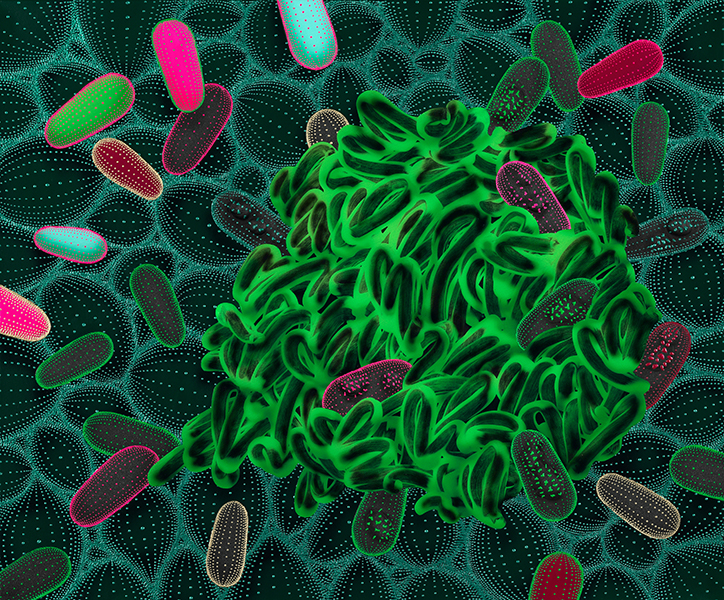CV Christoph Hüppi (pdf)

About
The first thing that strikes one about the paintings of Cristoph Hüppi is their originality - a
sort of quirky playfulness with an obsessive edge.
The paintings possess two distinct elements- a meticulously painted background and an array of
three-dimensional dots laid down with obsessive precision and inexhaustible patience.
The backgrounds are constructed with the help of techniques borrowed from hard-edged abstraction -
precisely taped and painted edges, an underlying grid like structure, smooth and flawless
gradations of tone and colour, stripes, loops, and curved planes.
Over this rational and ordered surface the dots swarm, sometimes in chaotic clusters, sometimes in
curving lines. Many of the paintings contain egg like forms whose three dimensionality is solely
created by the lines of dots that move over the surface in waves, creating the illusion of form and
perspective as they recede from view.
The colours used in these paintings are bright and luminous. Often there is the suggestion of light
moving over the surface, an effect created by the many subtle changes of tone and colour within the
forms. Hüppi uses acrylic for its fast drying properties, its uncomplicated technical procedures
(you can overlay colours in a matter of an hour without the danger of cracking in the finished
painting) and its high level of colour saturation and luminosity.
Hüppi's work has evolved in an interesting way over the past few years. Earlier paintings tend to
be more literal. The swarms are composed of ant-like forms that flood in dark waves over
realistically painted elements (stylised ant or termite mounds). In one large painting these mounds
stand alone. Hüppi explains that this particular image evolved into its final form by accident - a
fluid mix of paint and water seeped down the canvas and suggested the subject.
Talk of precision, hard edges and grids might lead one to believe that his approach is
predominantly cerebral - a result of careful forethought and planning. This is not so, as the above
incident with the termite mounds illustrates. The making of these works is a matter of
improvisation. When he speaks of this Hüppi uses words like accident, confusion, and chaos, to
describe the initial stages of a process that might span two or more weeks of concentrated effort
(Hüppi often puts in a 10 hour working day). After many changes of tone, colour and composition,
the piece takes shape. Hüppi uses an assortment of conventional, and unconventional, techniques to
achieve his ends. In one painting, for instance, he used his fingers to create a background and
then spent innumerable hours taping off the in-between shapes to create hard-edged negative
spaces. This combination of two conventionally opposing ways of working - improvisation and
meticulous hard-edged painting - is always risky. Sometimes, after weeks of concerted effort, a
piece just won't come together and has to be abandoned.
What is true of individual paintings is also true of the overall series - the work evolves in
largely unforeseen directions as the result of a process of improvisation spanning months and,
indeed, years. The ants of earlier paintings have evolved from swarms into armies of regimented
dots, which march like determined invaders over stylised abstract backgrounds.
One cannot but admire the backgrounds for their beauty, precision, and visual richness, but it is
the dots that steal the show. Hüppi uses squeegee bottles to lay down these dots, which, on closer
examination, tum out to be small perfectly formed three dimensional cones, which rise from the
surface in long, beautifully articulate lines of brail. They swarm over the painted surfaces like
living things and seem to possess a collective intelligence of their own, along with an
unpredictable wilfulness. They go about their business oblivious to the spectator and intent on
their own purpose. At times, especially when the clusters of dots seem to swell in numbers, the
paintings hint at something more sinister- outrageous excess on the part of nature that might be
dangerous.
On the whole, however, the paintings remain playful and unthreatening - all this writhing movement
can be neatly contained within the confines of the canvas. The underlying sense of order never
gives way to the chaotic swarm. The fact that the dots possess sculptural form and are not illusory
creations of the brush gives to the work the air of playful quirkiness that dispels any sense of
foreboding. This surprising and ingenious solution to the problem of depiction is the mark of an
original intelligence that has not locked itself into a (so called) adult sense of what is possible
but is in possession of a playful and anarchic disregard for rules and formulae. The work as a
whole, indeed, can be seen as a visual poem in praise of an anarchic opposition to the
claustrophobic forms of social convention that stifle naturally evolved human impulses.
These painting are rich not only at a surface level but also for the wealth of ideas they succeed
in evoking-ideas about order and chaos, restraint and excess, the man-made and the organic, the
revolutionary mob and the forces of social order. Most pertinently they evoke the play of the mind
itself as it creates and destroys, on the surface of the canvas and in the midst of life.
-
Review by Patrick Jennings
Einladung Gedenkausstellung Dezember 2021 (pdf)
Bei Anfragen zum Werk des Künstlers wenden Sie sich bitte an / for inquiries please contact:
fehuppi@gmail.com
*Christoph Hüppi Art Puzzle*
on puzzy.ch
© Christoph Hüppi 2022 - 2024
![]()
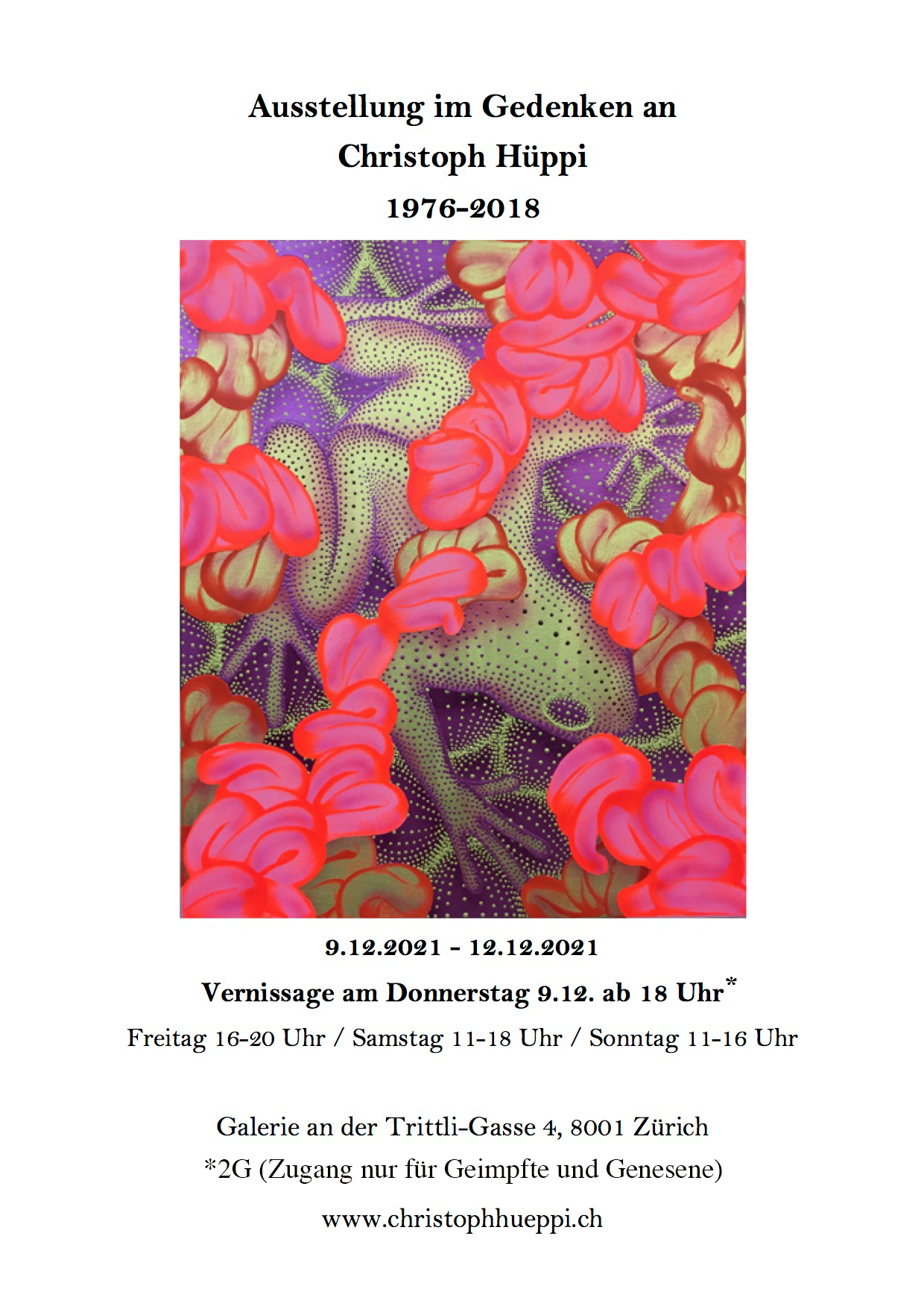













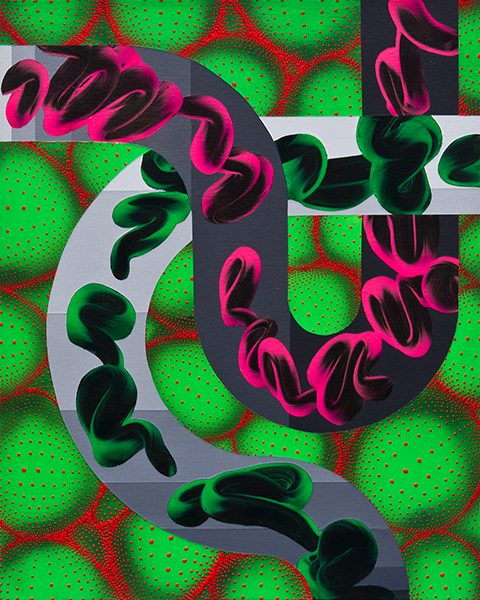

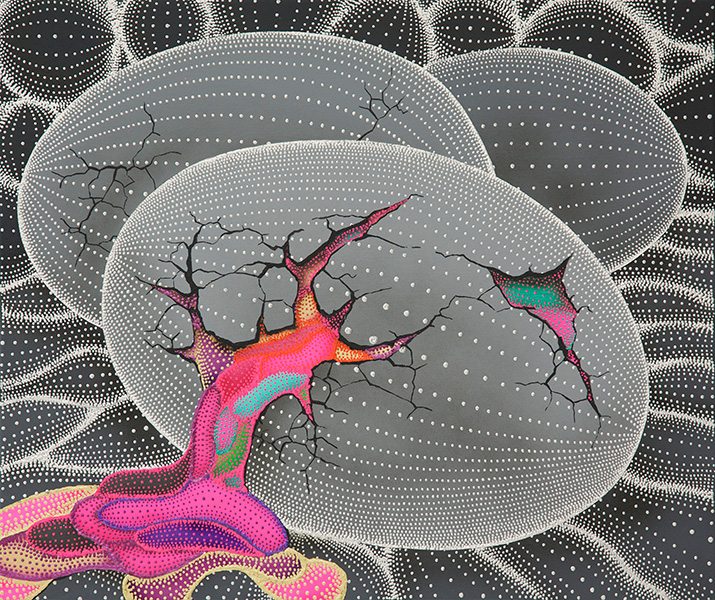




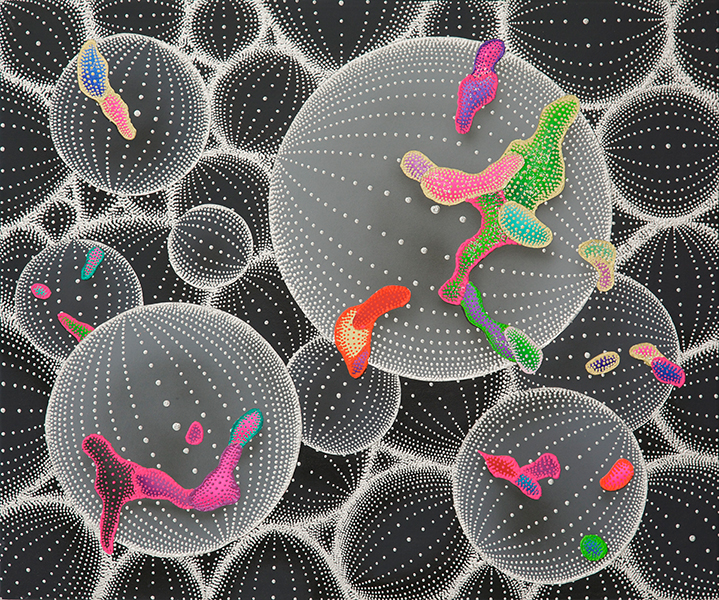







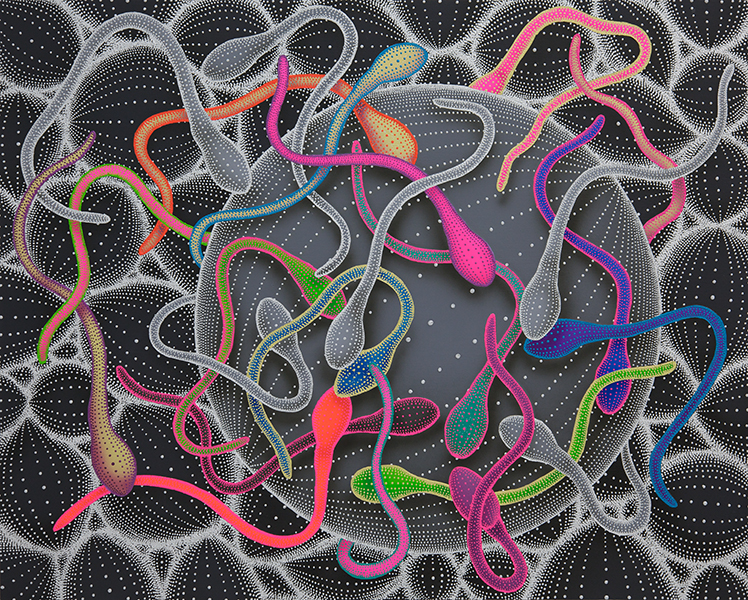












































.jpg)












